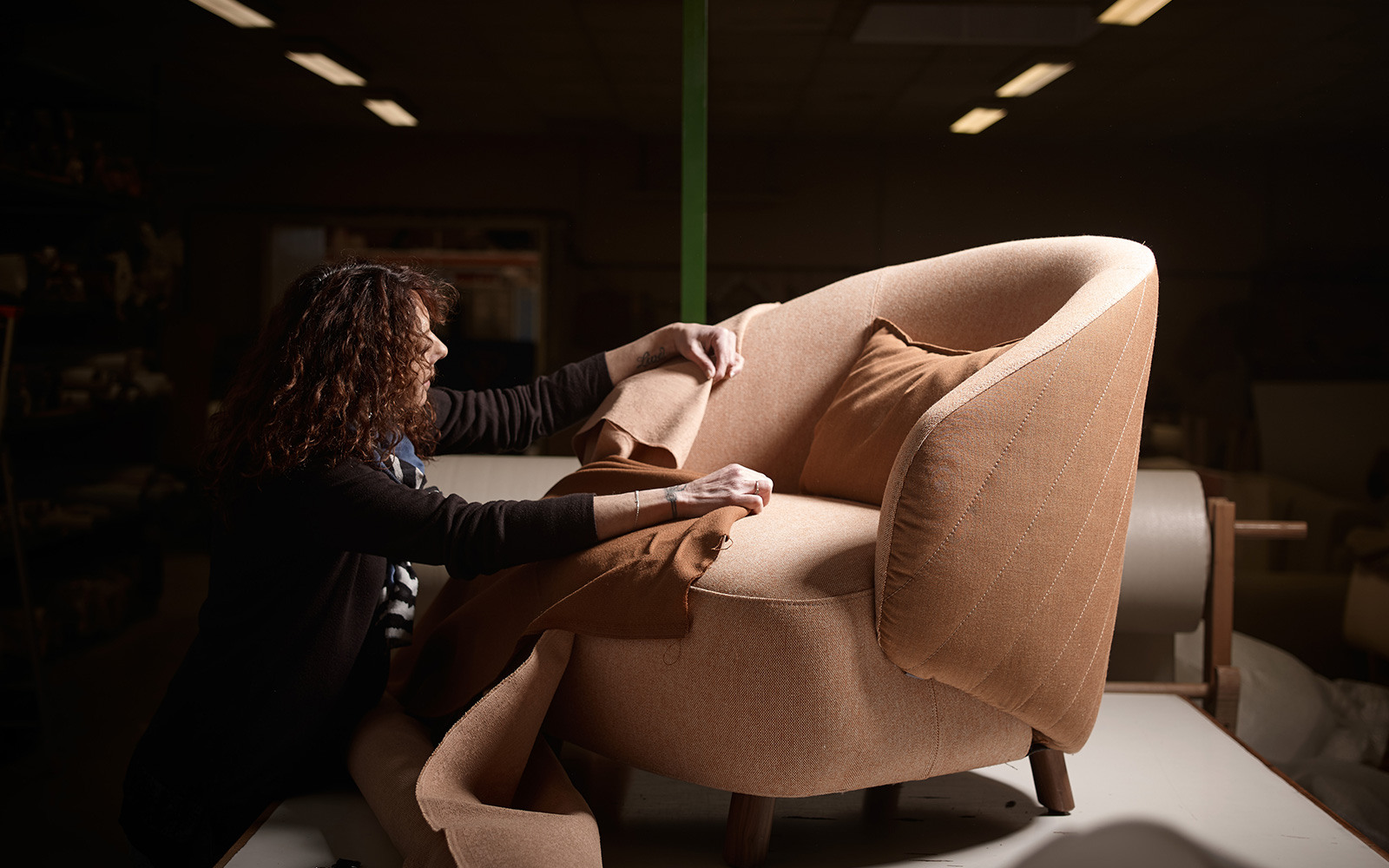The importance of Mingei craftsmanship in an industrialized world
Mingei, literally “people’s art”, was born in Japan in the 1920s under the impetus of the philosopher Yanagi Sōetsu. Faced with incipient industrialization threatening craft traditions, Yanagi developed a revolutionary aesthetic: beauty lay not in technical perfection or the signature of a recognized master, but in the natural harmony of objects created by anonymous craftsmen for everyday use, thus becoming a testimony to a creative humanity resisting the standardization of the world.
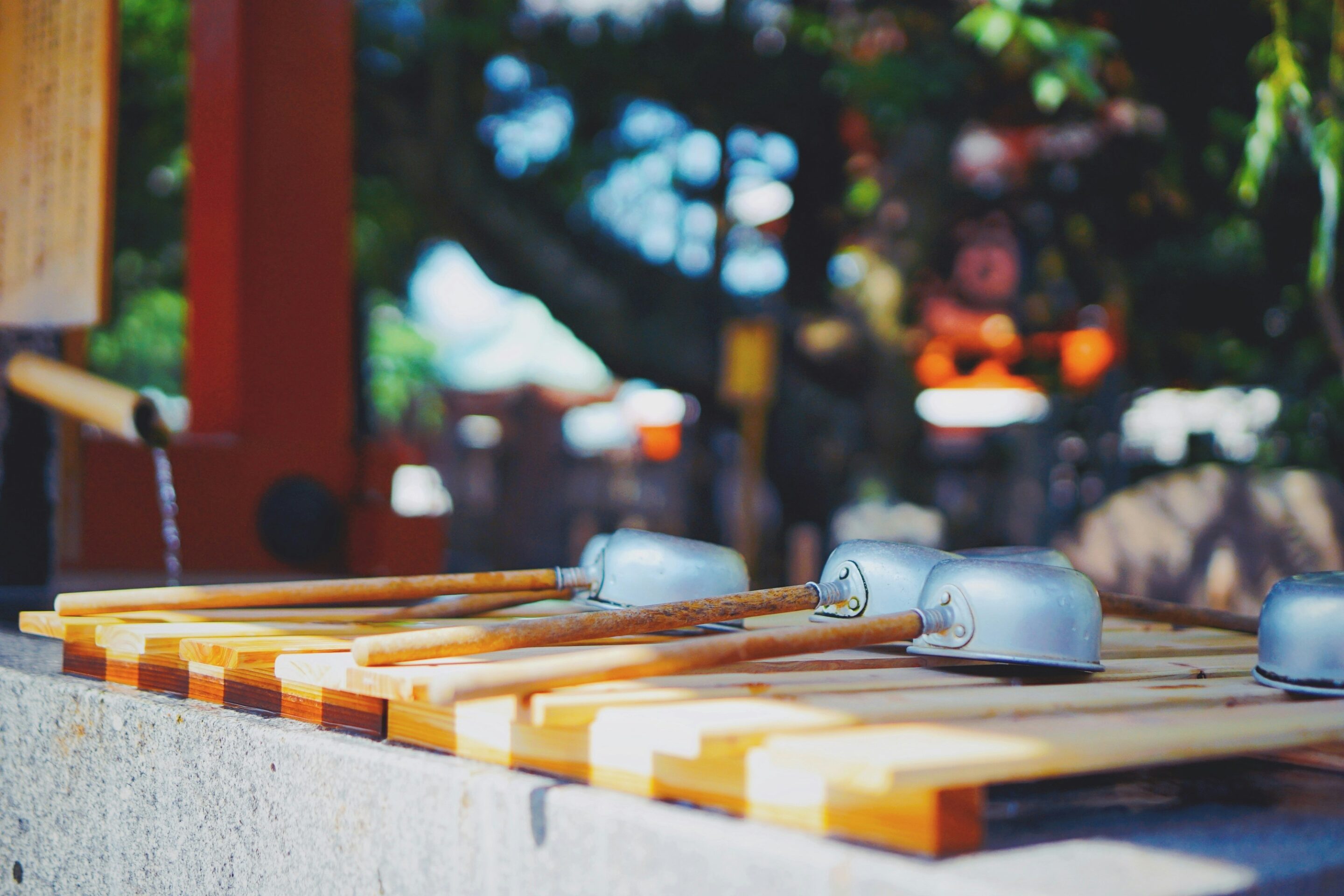
The material as inspiration, the hand as guide.
This philosophy overturns our Western conceptions of art. Where we seek originality and individual virtuosity, Mingei celebrates humility, functionality and the beauty that emerges from gestural repetition. A solid wood table, crafted in the Mingei spirit, is not beautiful despite the natural variations in its grain or the slight undulations of its surface, but because of them. These “imperfections” bear witness to the life of the tree, to the hand of the craftsman, to that creative spontaneity that no machine can ever reproduce. Each board tells the story of the tree it comes from, each knot a precious detail rather than a flaw to be hidden unless it’s too obvious. This approach to woodworking, a direct descendant of the Mingei spirit, embodies one of the most relevant philosophies of our industrialized age.
The antidote to standardization
In our hyper-connected, standardized world, Mingei offers a fascinating counterpoint. While globalization tends to erase local specificities, algorithms offer us calibrated content and artificial intelligence generates perfect but cold images, the Mingei spirit reminds us of the value of human imperfection. Take our consumer habits, for example. We live surrounded by mass-produced objects, millions of them identical. Our smartphones all look the same, our clothes come off the same outsourced production lines. production lines..
While this standardization has undeniable economic advantages, it deprives us of an intimate relationship with the objects that surround us. The Mingei approach invites us to rediscover this intimacy. Handcrafted wooden furniture, with its unique veins and subtle variations in shade, tells a story. It carries with it the seasons through which the tree has passed, the region in which it grew, the particular technique of the cabinetmaker who worked it. Each piece of furniture becomes unique, charged with a soul that no industrial product made of chipboard or molded plastic possesses.
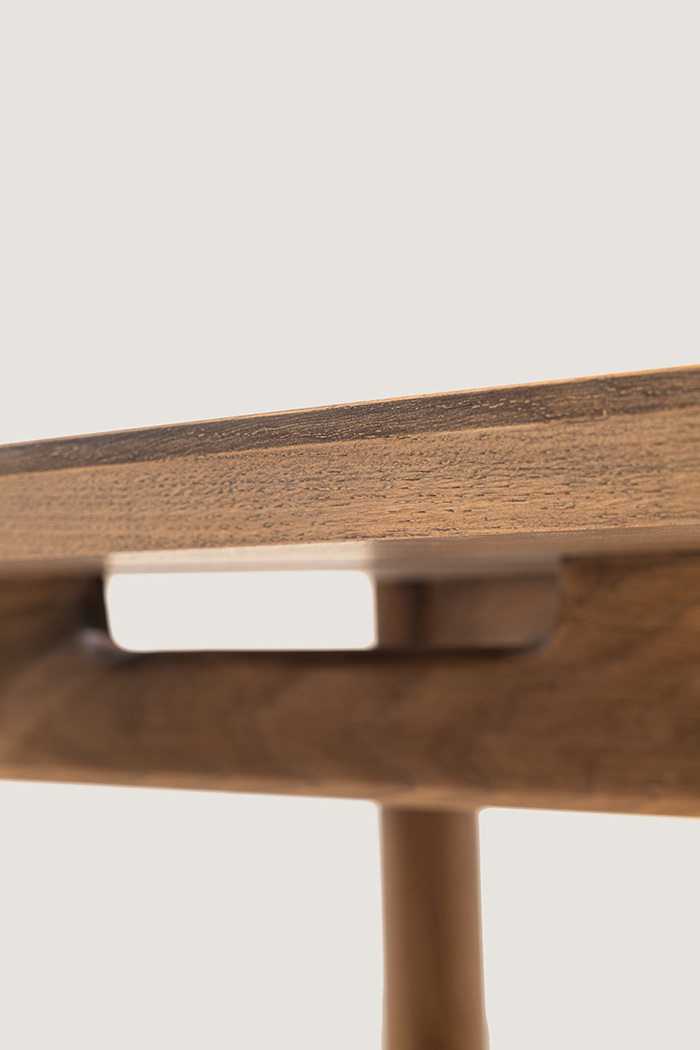
Roland table detail – Atelier Bosc
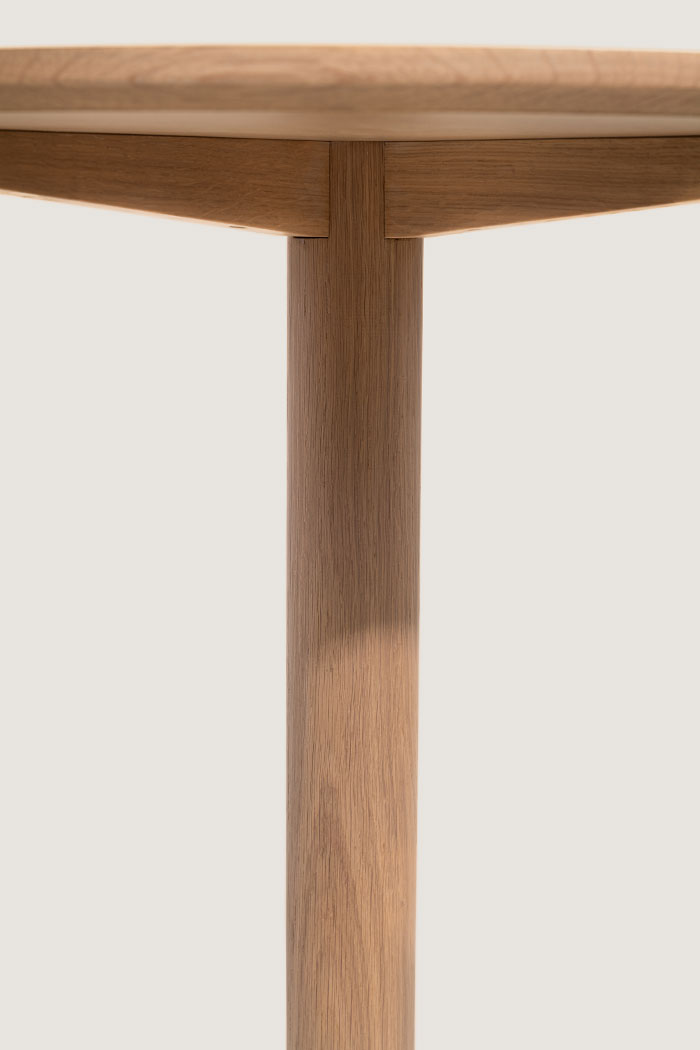
Detail of Soha table Atelier Bosc
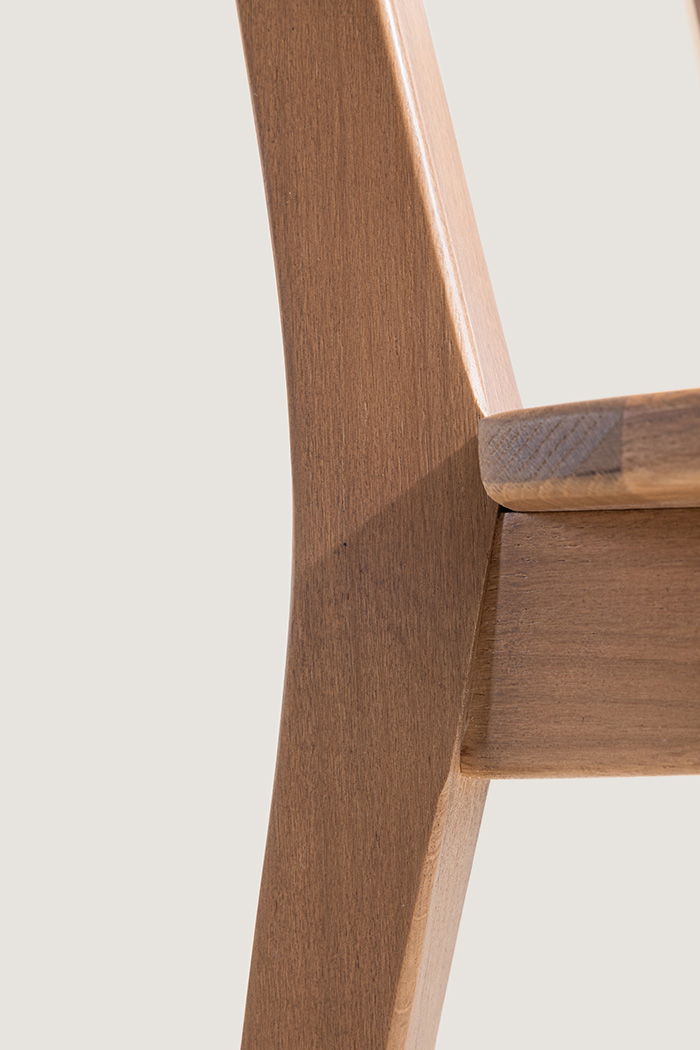
Detail of Geneviève chair Atelier Bosc
Wood, living matter and the Mingei spirit
Woodworking perfectly embodies the Mingei spirit in contemporary furniture. Unlike uniform industrial materials, wood carries with it the living history of nature. Each species has its own personality: the warmth of oak, the softness of beech, the elegance of walnut, the strength of ash. The craftsman-cabinetmaker trained at the Mingei school does not seek to mask these natural characteristics, but reveals and sublimates them. This approach revolutionizes our relationship with furniture. In contrast to kit furniture with perfectly smooth, identical finishes, Mingei-inspired furniture takes on the wood’s knots, variations in density and slight deformations due to natural drying.
These elements, traditionally considered industrial flaws, become the signatures of authenticity that make each piece unique. The Mingei cabinetmaker has developed an intimate knowledge of his material. He knows how to read the tree, understand its internal tensions and anticipate its movements. This sensual relationship with wood, based on patient observation and accumulated experience, stands in stark contrast to industrial production methods that standardize and rationalize every step.
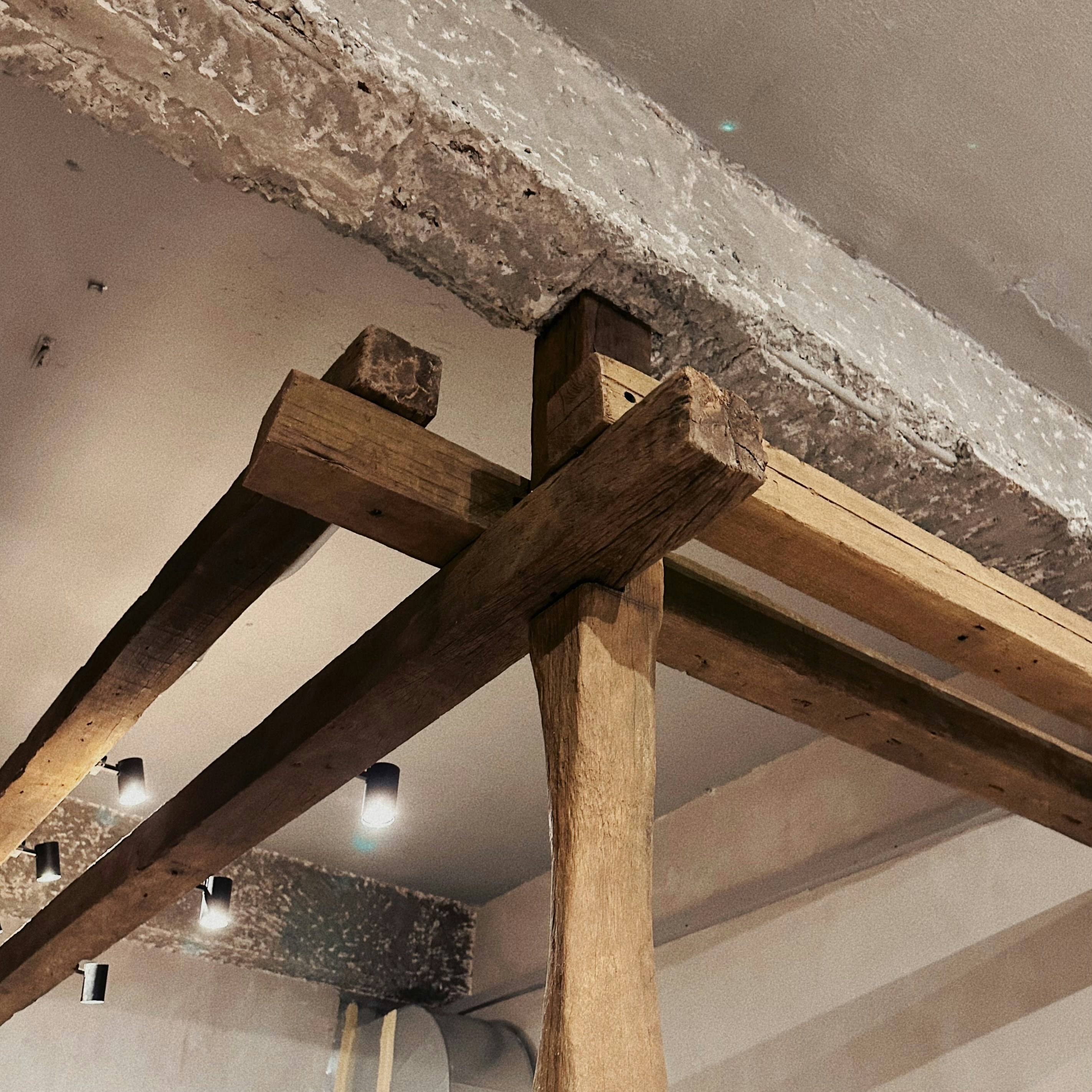
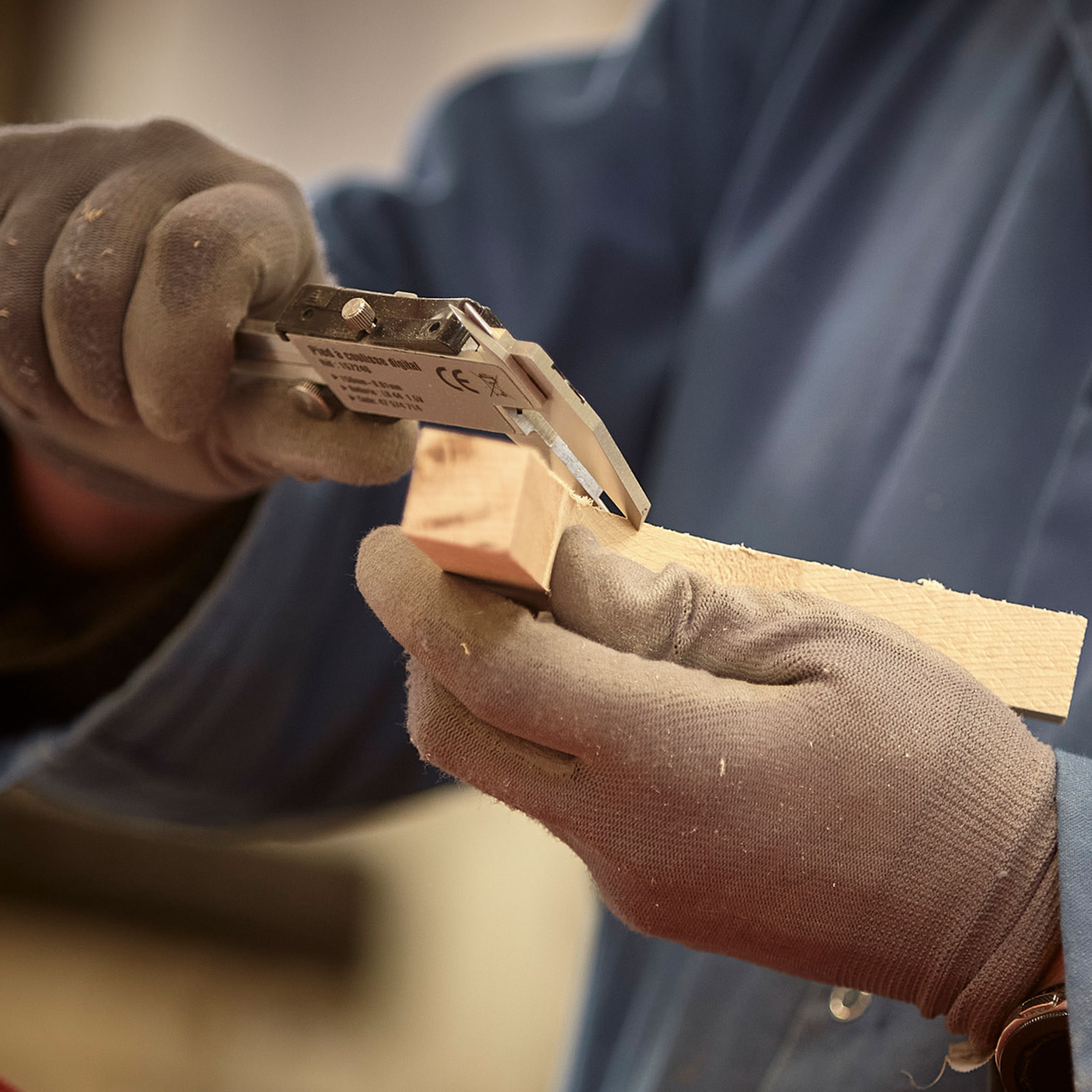
Atelier Bosc
The wisdom of doing
Beyond aesthetics, Mingei conveys a philosophy of work that resonates particularly well in our post-industrial society. Faced with the growing disconnect between designers and producers, creators and users, Mingei craftsmanship advocates a holistic approach. The Mingei craftsman doesn’t just reproduce models: he understands his material, dialogues with it and adapts to its constraints. A cabinetmaker working in this spirit will adjust his assemblies according to the particular density of the wood he is working with, or modify the inclination of a backrest according to the natural fibers of the board.
This intimate relationship with the creative process develops a form of tactile, intuitive intelligence that our digital age tends to neglect. In a world where we can design a piece of furniture on screen without ever touching the wood from which it will be made, the Mingei approach reminds us of the importance of direct contact, of sensual experimentation. This wisdom of making finds unexpected contemporary echoes. Makerspaces, fab labs and the DIY (Do It Yourself) movement testify to a growing need to rediscover technical mastery and the satisfaction of the creative gesture. The success of YouTube craft tutorials, the craze for designer markets and the marketing emphasis on “handmade” reveal a collective nostalgia for authentic craftsmanship.
The ecology of beauty
The Mingei spirit also resonates with contemporary environmental concerns. Faced with the overproduction of disposable furniture and the waste of forest resources, the Mingei spirit applied to woodworking proposes a different relationship to furniture: favoring quality over quantity, durability over programmed obsolescence, repair over replacement. A piece of solid wood furniture designed according to the Mingei spirit, assembled using traditional techniques, is radically opposed to our disposable furniture culture. Traces of use, far from being perceived as defects, become patinas that add to its beauty. This aesthetic of ageing invites us to reconsider our relationship with time and materiality.
A tabletop that develops a patina, chair legs that wear slightly, drawer handles that polish under the hands: these are all marks of time that enrich rather than devalue the object. In architecture and furniture design, this approach is inspiring new practices. Designers are collaborating with traditional cabinet-makers to create contemporary furniture that assumes its woody materiality. They are rediscovering mortise-and-tenon joints, making the most of local species and incorporating controlled imperfection into their creations.

Atelier Bosc for the Notre Dame de Paris chair designed by Ionna Vautrin
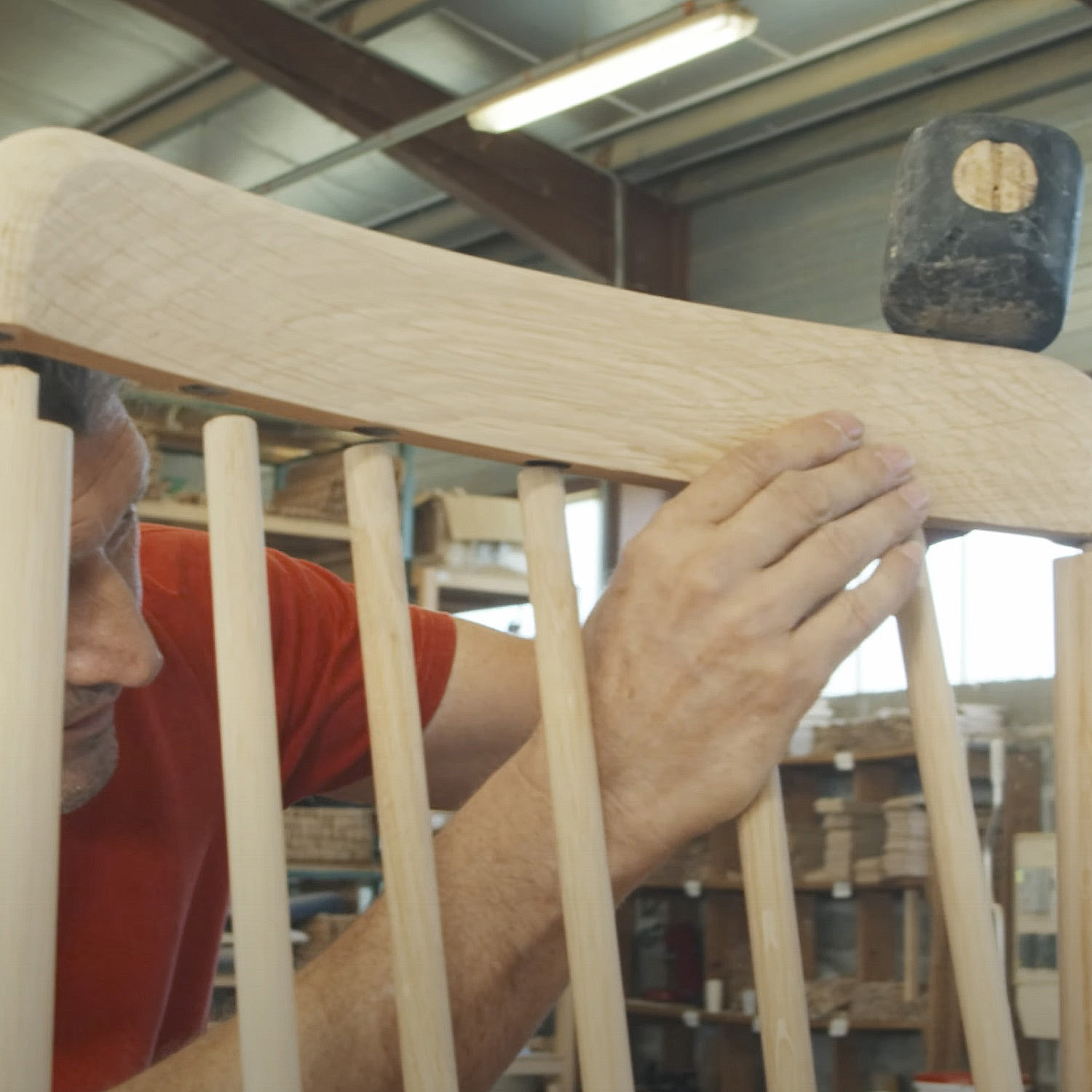
The challenges of modern adaptation
Transposing the Mingei spirit into contemporary furniture is not without its difficulties. How can we reconcile the demands of modern productivity with the contemplative slowness of traditional woodworking? How can we make solid wood furniture, which is necessarily expensive, accessible in a world where purchasing power is stagnating? The answer probably lies not in a complete return to pre-industrial methods, but in intelligent hybridization. Some workshops are already experimenting with production methods that incorporate the Mingei spirit: the use of machine tools for roughing while preserving manual finishing, collaboration between contemporary designers and traditional cabinet-makers, and the development of short circuits that value local species.
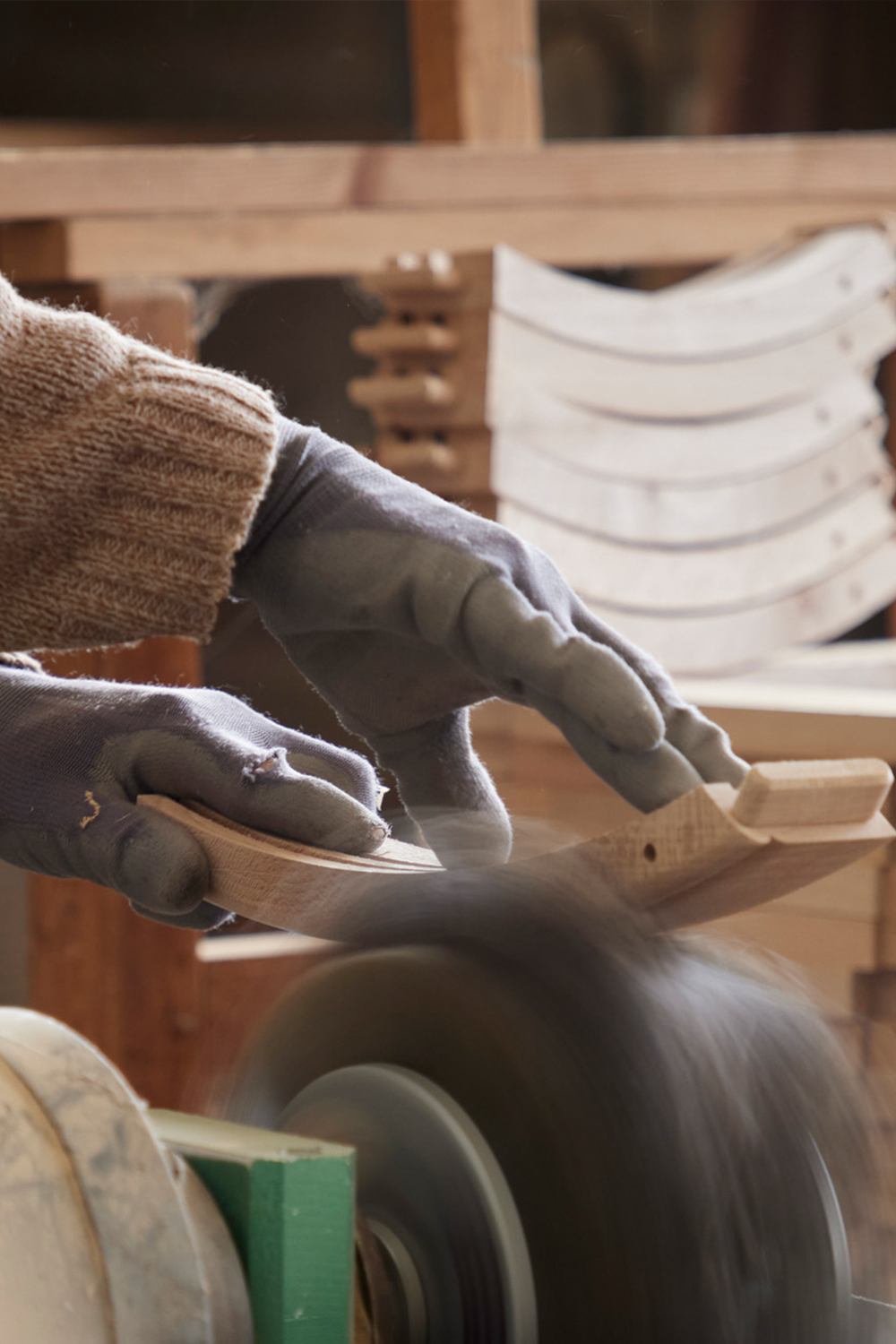
Ateliers Bosc for the Lanas chair designed by Yun Yatsumoto
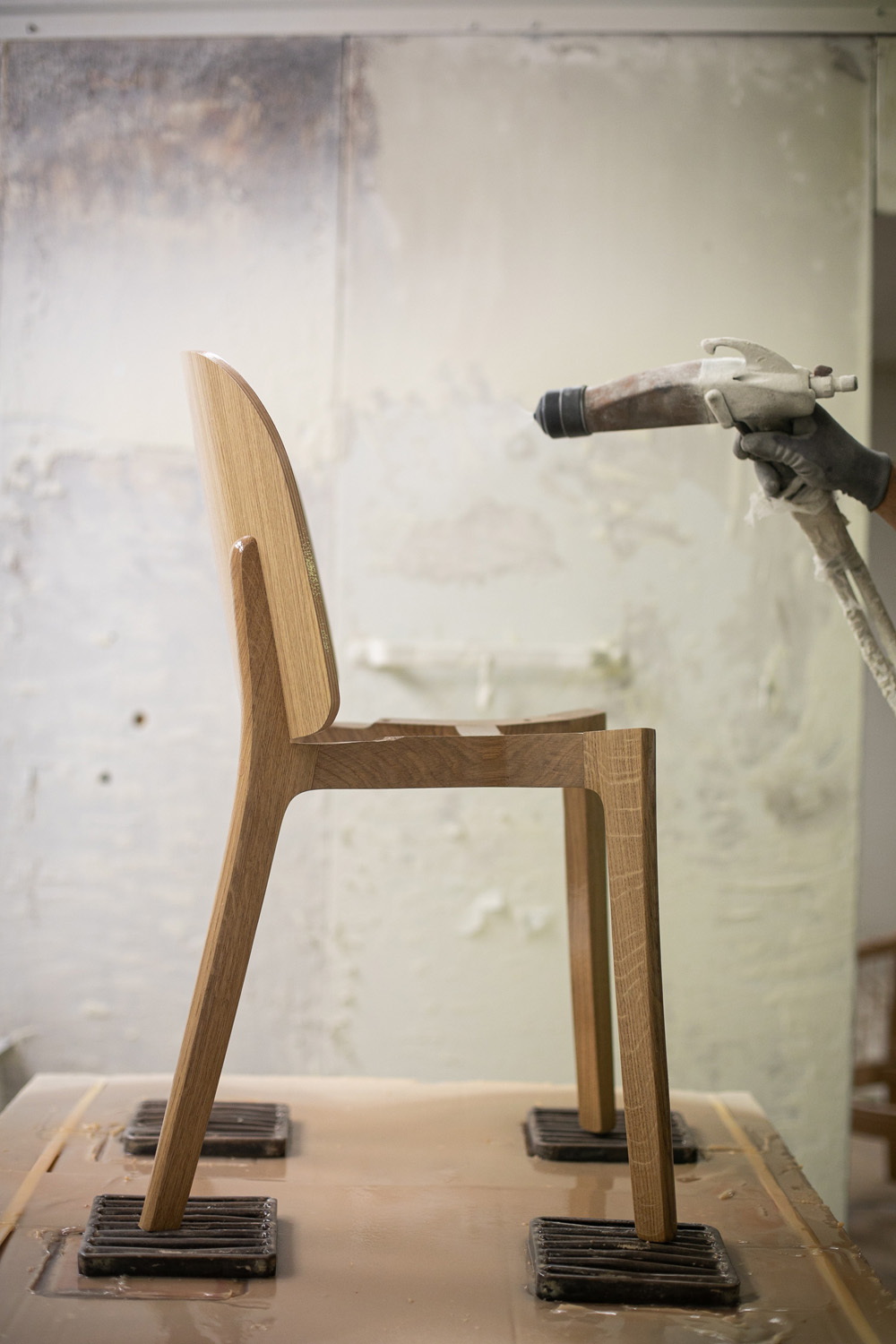
Towards a craft renaissance?
Interior designers are rediscovering the virtues of made-to-measure furniture, adapted to the specific constraints of each home rather than standardized. Mingei offers us much more than aesthetics: it proposes an alternative philosophy of life to hyper-consumption and standardization. In a world that favors speed and efficiency, it invites us to rediscover the pleasure of creative slowness. In the face of an obsession with perfection, he celebrates the beauty of human imperfection.
This age-old wisdom applied to woodworking could well be one of the keys to building a more humane and sustainable future. Not by rejecting modern tools, but by putting them at the service of an approach that puts artisanal sensibility back at the heart of furniture creation. In a world of mass-produced furniture and standardized assemblies, what will always distinguish us from machines is precisely our ability to reveal the soul of wood, to create the unique, the sensitive, the authentic.
Mingei applied to furniture is a powerful reminder that the true beauty of a piece of furniture does not necessarily lie in the industrial perfection of its surface, but in the unique trace left by the tree and the craftsman in each of their creative collaborations. Each grain of wood, each gesture of the tool, each assembly becomes the testimony of a creative humanity that resists the standardization of the world.
